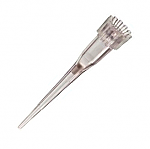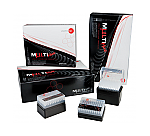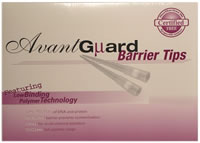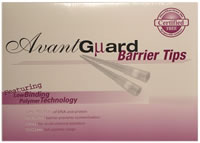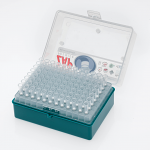- Home
- Pipette Tips
- Barrier Pipette Tips
Barrier Pipette Tips
Light Lab's AvantGuard Barrier Tips feature an inert hydrophobic barrier, low binding surface technology, extremely clear resin, reference marks, and many other features. They are perfect for PCR reactions, RNA and DNA work, protein work, and any other bench work that requires barrier tips.Each package of Avant Guard Barrier Tips comes with 10 boxes of individually shrinkwrapped, RNase/DNase free tips. All sizes are packaged with 960 tips/pack, except the 1mL tips, which are packaged 1000 tips/pack and the 1.2mL tips which come 768tips/pack.Recently, Light Labs has developed a new 1.2mL, 200ul and 10ul Barrier tip. This was done in response to a demand for longer tips that easily reach the bottom of tubes, thus eliminating cross contamination. Researchers performing PCR love them. Our new 200ul Avantguard Barrier Tip features this extended length, as well as a fine point and reference marks.
However, the features that set the 200ul tip apart from the field of barrier tips, are its exceptional clarity and soft fit. The soft fit is unique, in that it is created by a thin wall surface at the base of the tip, thus reducing the amount of force needed to create a seal with a pipette and to eject the tip. The clarity of the 200ul Avantguard Barrier tip speaks for itself. The extended length of the 10ul AvantGuard Barrier Tip also serves to decrease cross contamination. The tip easily reaches the bottom of PCR tubes, PCR plate wells, and Microcentrifuge tubes.
However, the features that set the 200ul tip apart from the field of barrier tips, are its exceptional clarity and soft fit. The soft fit is unique, in that it is created by a thin wall surface at the base of the tip, thus reducing the amount of force needed to create a seal with a pipette and to eject the tip. The clarity of the 200ul Avantguard Barrier tip speaks for itself. The extended length of the 10ul AvantGuard Barrier Tip also serves to decrease cross contamination. The tip easily reaches the bottom of PCR tubes, PCR plate wells, and Microcentrifuge tubes.

